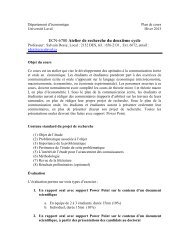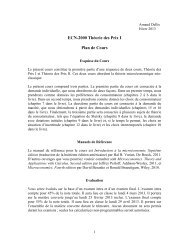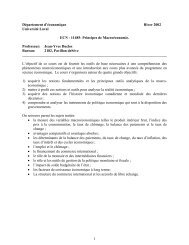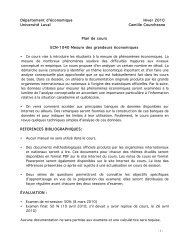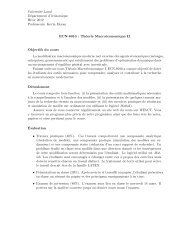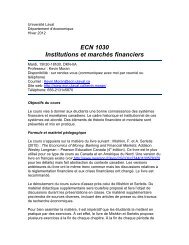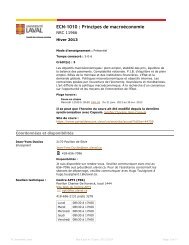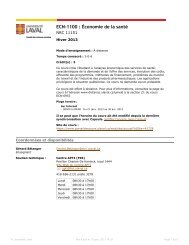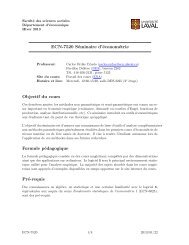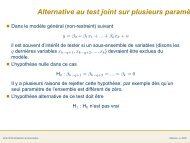Comparaisons multidimensionnelles de bien-être et de pauvreté ...
Comparaisons multidimensionnelles de bien-être et de pauvreté ...
Comparaisons multidimensionnelles de bien-être et de pauvreté ...
You also want an ePaper? Increase the reach of your titles
YUMPU automatically turns print PDFs into web optimized ePapers that Google loves.
AbstractThe main objective of this thesis is to purpose a suitable statistical m<strong>et</strong>hod for comparingwelfare when we <strong>de</strong>al with multivariate distributions. After a critical literature review onstatistical inference based composite hypotheses, the intersection-union (IU) type of formulationhas been r<strong>et</strong>ained for making unambiguous robust comparisons in the sense of strictstochastic dominance. Davidson and Duclos (2006) suggest in this way, a m<strong>et</strong>hod using theempirical likelihood ratio for testing the stochastic dominance in the univariate distributionscontext. This m<strong>et</strong>hod is exten<strong>de</strong>d by this thesis to the multivariate distribution, which is inphase with the recent literature on poverty and welfare analysis that advocates the use ofseveral dimensions to measure the welfare.The first chapter consists in analyzing the performances of the suggested m<strong>et</strong>hod in bidimensionalcontext. This m<strong>et</strong>hod, based on the maximization of an empirical likelihoodfunction, tests for the null hypothesis of non dominance against the alternative of dominance.The test statistic is pivotal, which enable to perform Monte Carlo simulations for analyzingthe size and the power of asymptotic and bootstrap tests.Once the test performances judged satisfactory, illustrations are ma<strong>de</strong> to study the stochasticdominance relations in poverty b<strong>et</strong>ween some African countries. Two dimensions areconsi<strong>de</strong>red for drawing the bivariate distributions : The nutritional status and an ass<strong>et</strong> in<strong>de</strong>x<strong>de</strong>rived from factor analysis m<strong>et</strong>hods using DHS (Demography and Health Surveys) data.The third chapter consists in consi<strong>de</strong>ring the case where one of the two dimensions is adiscr<strong>et</strong>e variable. We then test for the sequential stochastic dominance relations in welfare




